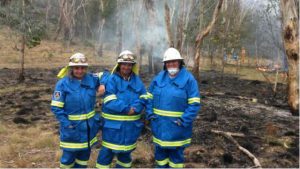Home » Commentary » Opinion » Indigenous ranger programs offer economic opportunities
· Koori Mail
 A recent poll found that support for Indigenous environmental conservation programs is high, however, these initiatives must promote financial independence as well as ecological sustainability.
A recent poll found that support for Indigenous environmental conservation programs is high, however, these initiatives must promote financial independence as well as ecological sustainability.
Over 80% of Queenslanders believe Indigenous rangers to be central to the protection of ecosystems across the state. Respondents also valued the employment benefits that these programs can bring.
Ranger programs – which largely undertake environmental conservation — employ thousands of Indigenous people across Australia. However, they remain heavily reliant on government grants. In 2017 $30 million of federal government funding was committed to Indigenous land management over the next four years.
If these programs are to be beneficial in the long term they must become financially self-sustainable. To do this Indigenous communities need to leverage market opportunities that can create genuine sources of income.
Fortunately, there are commercial elements that can be incorporated into many Indigenous land management programs. Some activities are already being undertaken by rangers, but are yet to be fully exploited for commercial gain.
Back burning of bush and grasslands is one of the most common practices of Indigenous ranger groups. However, only a limited number of communities have sought to utilise the business opportunity of this practice – carbon farming.
As the carbon market evolves, companies across the world are looking to offset emissions in order to meet government or corporate social responsibility targets. In the Kimberley ranger groups are already selling carbon units to companies such as Qantas and Allens.
The Australian carbon farming industry is expected to be worth up to $24 billion by 2030. Indigenous communities are well placed to exploit this market, and ranger groups must look to integrate it into burning practices.
In the Northern Territory the economic potential of rampant feral buffalo populations offers another opportunity. There are up to 100,000 buffalo in Arnhem Land alone.
Indigenous rangers are already working to control buffalo and reduce their impact on the native vegetation. However, culling and population control should be harnessed for greater financial gain.
Buffalo hunting safaris, led by rangers, could generate income and act as a disincentive to illegal killings and trespassing on Indigenous land. Similar ventures could be run with wild pigs in Queensland.
The benefits of land management programs can also be more wide-ranging, and would be infinitely more constructive than the superficial ‘work-like’ activities currently undertaken in the heavily criticised Community Development Programme.
Many of the skills rangers acquire will likely to be transferable to other employment opportunities or to running a small business. For example, a ranger’s knowledge of the ecosystem and the Indigenous stories of a landscape could set the foundations for a four-wheel drive and camping tour enterprise.
Economic development is essential for remote Aboriginal communities wishing to close the gap. For these communities to survive and thrive they must ultimately be able to stand on their own two feet and reduce their reliance on government funding.
The ongoing growth of Indigenous ranger groups presents a significant chance for communities to target markets that can help them achieve this – it is an opportunity that should not be missed.
Charles Jacobs is a Policy Analyst in The Centre for Independent Studies Indigenous Research Program.
Indigenous ranger programs offer economic opportunities